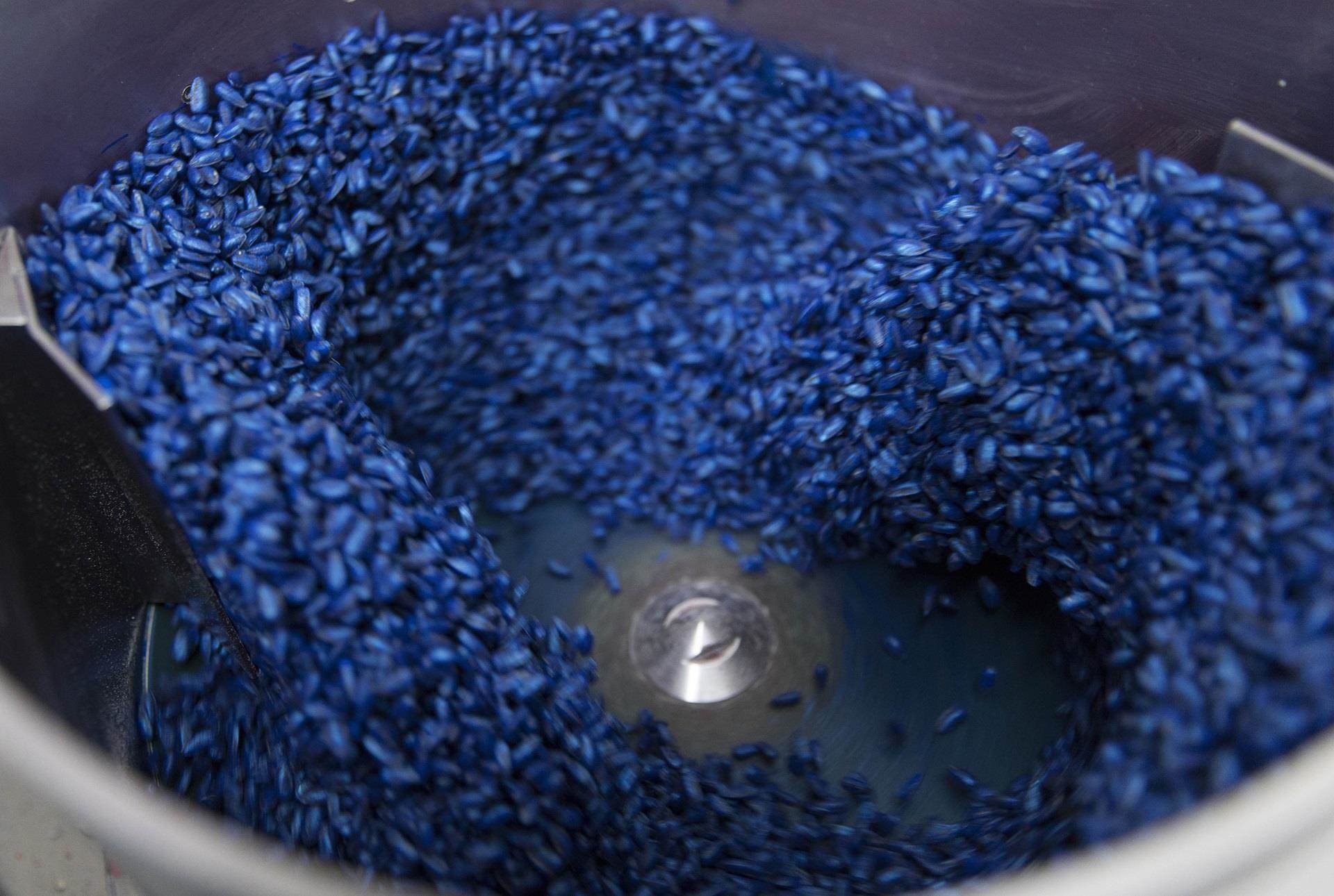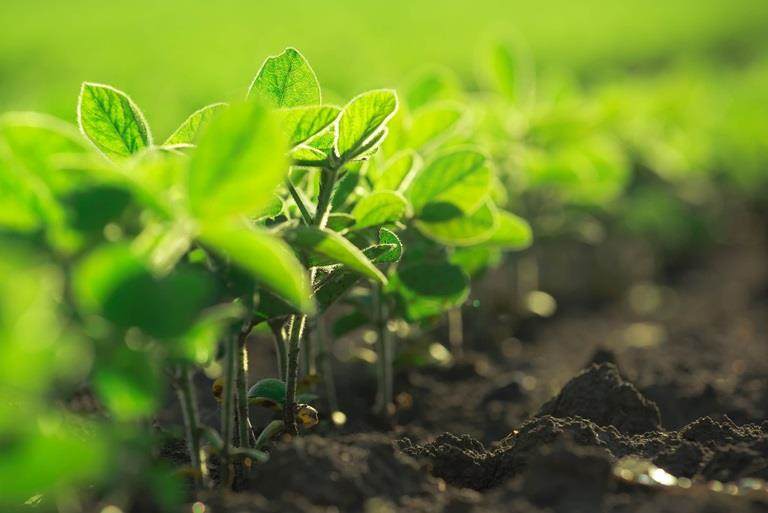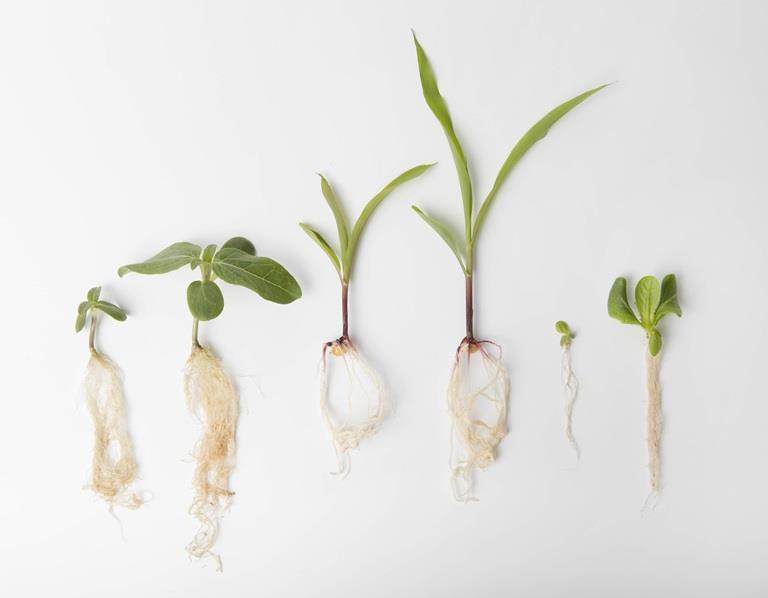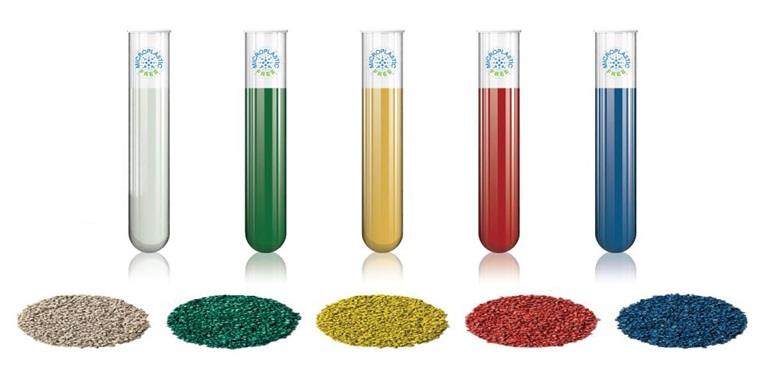Seed encrusting
For an efficient sowing process using mechanical planting equipment, seed size and weight need to be sufficient. Seed encrusting is an effective way of providing this. In some cases, adding that little bit of extra weight is what determines whether a seed is fit for sale or not. Encrusting seeds also offers the option of integrating products into the encrustment to protect the seed and stimulate healthy development and growth. And to accentuate a seeds value, a colour or visual effect can be added. This enhances the seed’s appearance and also makes dark seeds more visible on the soil.

Encrusting process
Vegetable and field crops seeds are encrusted using the rotary coater. Carefully selected coating components ensure seed safety and compatibility as well customizing the coating to the specific requirements of the crop. The layer that is built up around the seed smoothens the seed surface. The added weight and size can be of great benefit for some crops like carrot, onion, sunflower and forages. After encrusting, seeds are dried. This is a delicate process and the sensitivity of the seed is what determines the temperature and speed of drying.
Encrusting seeds increases the efficiency of the sowing process and improves planting accuracy...we carefully select the components that make up the coating to ensure compatibility with the seeds and additives and to support strong plant development.
Vegetable seeds
Encrusting vegetable seeds increases the efficiency of the sowing process and improves planting accuracy, especially when the seed shape and size is not standard. Onion and carrot seeds, for example, are small and have an irregular shape. Lettuce seeds are also small but thin and lightweight with a somewhat hairy surface. Encrusting standardizes the seeds’ weight and size and smooths out a lot of the irregularity. As a result, the sowing equipment needs less adjustment, and it reduces the risk of skips and doubles in the planters. This allows an efficient and accurate sowing process and seeds that are sown with the correct spacing and depth. Compared to pelleting, encrusting is faster and, in some cases, a more economical way of achieving these benefits.
Field crops seeds
As with vegetable seeds, encrusting field crops seeds makes the planting process more efficient and sowing more accurate. This is not only for smaller seeds like canola (OSR) and rice but also for larger seeds like corn. Corn seeds have a very irregular shape, weight and size. Encrusting makes them much more uniform which is a real benefit when it comes to mechanical sowing. In other crops, like some sunflower varieties in Europe and in the USA, seeds that do not meet certain weight norms are considered unfit to market and will not be granted certification for export. We have encrusting products, such as SunCrust Sunflower, that will add the required extra weight. In this way, the seeds’ value is increased because they can be sold for seed production instead of for oil.
Crop protection and nourishment
The encrustment creates an extra layer around the seed. This extra surface space facilitates integration of products for protection, nutrition and to stimulate healthy development of the seed and crop. We carefully select the components that make up the coating to ensure compatibility and remove any concerns of phytotoxicity. The highly developed application method itself achieves even seed-to-seed distribution of any active ingredients so that each seed gets optimal support.
By incorporating the active ingredients into the coating, they can be applied directly to the seed in a far more accurate and targeted way. This reduces the impact on the environment because it requires a significantly lower amount of active material compared to in-furrow or foliar methods.
Safe application
Abrasion-resistance and dust-off are always a focal point in the development of all of our products. As with all our coatings, our encrusting products are designed to keep all the components of the coating safely on the seed. This means maximum protection for the seeds and it is safer for the environment and better for the working conditions of anyone handling the seed.


